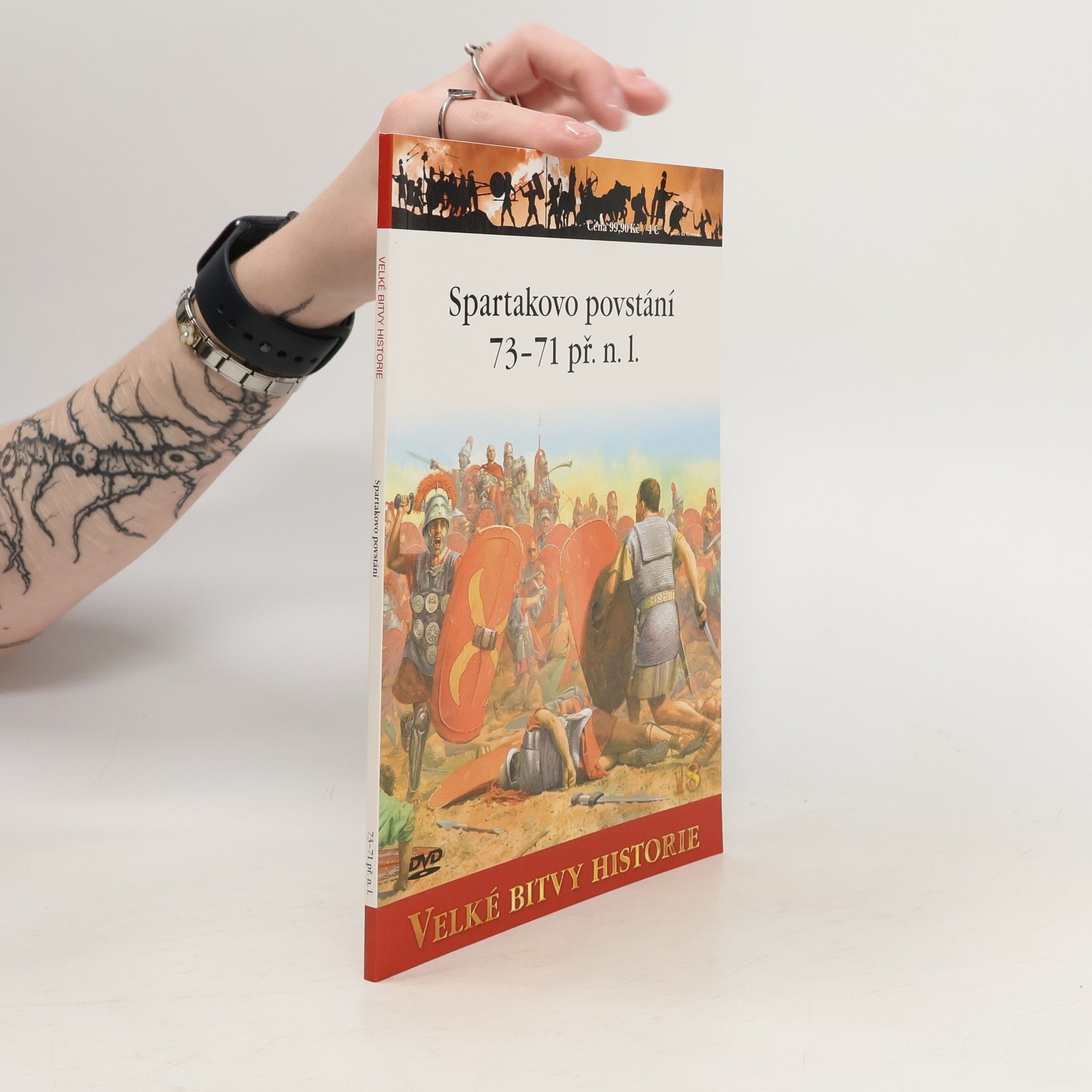Nic Fields Knihy







Řecká válečná loď - Triéra (500 - 322 př.n.l.)
- 48 stránok
- 2 hodiny čítania
Starověké triéry představovaly nejobávanější a nejdokonalejší válečné lodě Středomoří. V době své největší slávy byli dominantními představiteli jejich ničivé síly Athéňané. Triéra byla veslice primárně určená k boji, s bronzem okovaným klounem na přídi jako hlavní zbraní. Její konstrukční prvky později převzali Římané při stavbě trirém. V knize najdete detailní a kompletní popis této nejmocnější antické válečné lodě, s jejíž pomocí Athény ovládaly po jistou dobu východní Středomoří. Ani tato zbraň jim však nakonec nezajistila výsostné postavení námořní velmoci natrvalo.
Spartakovo povstání 73-71 př. n. l. - Vzpoura gladiátora proti Římu
- 96 stránok
- 4 hodiny čítania
V roce 73 př. n. l. otrokářská společnost římské republiky s hrůzou pozorovala, jak se její největší noční můra stává skutkem: vypuklo povstání otroků. Gladiátoři vedení Thrákem Spartakem si probili cestu z gladiátorské školy a z uprchlých otroků, kteří prakticky neměli co ztratit, vytvořili vojsko o síle 70 000 mužů. Prošli napříč Kampánií, dobyli bohatá města Kúmy, Nolu a Nucerii a porazili dvě konzulská vojska. Spartakus se stal pro Řím obrovskou hrozbou. Jeho zničení dostal za úkol Marcus Licinius Crassus. V bitvě na řece Silarus byl nakonec Spartakus poražen a zabit a jeho vojsko bylo rozprášeno. Jako varování ostatním pak Crassus nechal podél cesty mezi Římem a Capuou, kde vzpoura začala, 6 000 přeživších vzbouřenců ukřižovat.
Mutina 43 BC
- 96 stránok
- 4 hodiny čítania
In the aftermath of Julius Caesar's assassination, Octavian and the forces of the late Republic battled Mark Antony in the battles of Forum Gallorum and Mutina in 43 BC.
The first dedicated examination of Alexander the Great's final battle and acknowledged tactical masterpiece.In the years that followed Alexander the Great's victory at Gaugamela on 1 October 331 BC, his Macedonian and Greek army fought a truly 'Herculean' series of campaigns in what is today Iran, Turkmenistan, Afghanistan, and Pakistan. But it was in the Indus Valley, on the banks of the Hydaspes River (known today as the Jhelum) in 326 BC that Alexander would fight his last major battle against King Poros.Using detailed maps and 3D diagrams, this beautifully illustrated work shows how Alexander used feints and deception to transport a select force from his army across the swollen River Hydaspes without attracting the enemy's attention, allowing his troops the crucial element of surprise. Battlescene artworks and photographs reveal the fascinating array of forces that clashed in the battle, including Indian war elephants and chariots, and horse archers and phalanx formations. Also examined are the differences in weaponry and armour between the opposing sides, which would prove crucial to the outcome. Although a tactical masterpiece, the Hydaspes was the closest that Alexander the Great came to defeat, and was one of the costliest battles fought by his near-exhausted army.
Farewell to the Liar
- 528 stránok
- 19 hodin čítania
The final instalment of The Tales of Fenest. Detective Cora Gorderheim must make a terrible choice: her sister's life, or the future of the Union.
Early Roman Warrior 753-321 BC
- 64 stránok
- 3 hodiny čítania
The prototypical 'Roman Legionnaire' often seen on television and in movies is actually the product of nearly a millennium of military development. This book covers the evolution of the earliest Roman warriors and their development into an army that would eventually conquer the known world.
The Roman Army
- 96 stránok
- 4 hodiny čítania
The Roman Legions were the most highly organized troops of the ancient world, but the process of turning the Legions from what was essentially a part-time citizen militia into the professional force that first made Rome the dominant power in the Mediterranean and then built an empire that stretched across the known world, was no small featFocusing on the organizational changes in the Roman Army during the Civil Wars, Nic Fields examines the role played by Caius Marius and his far-reaching reforms, which included having professional volunteers from the lowest social class enter the army in search of the possibility of plunder. He goes on to examine the consequences of encouraging these soldiers to follow their commanders without question, which broke the allegiance of the army to the Roman state, a trend that gave rise to militarily ambitious men such as Sulla, Pompeius, Caesar, Antonius, and Octavian.With the nuts and bolts detail that readers demand from the Battle Orders series, this is an intriguing description of how the Roman army grew, modernized, rebelled and finally helped build an empire, complete with full organizational charts, photographs and detailed maps.
Spartan Way
- 148 stránok
- 6 hodin čítania
The Spartan Way examines how Spartan society, through its rigid laws and brutal educational system, was thoroughly militarized and devoted to producing warriors suited to the intense demands of hoplite warfare - professional killers inculcated with the values of unwavering obedience and a willingness to fight and die for their city. The role of Spartan women, as mothers and wives, in shaping the warrior ethic is considered, as are the role of uniform and rigorous training in enhancing the small-unit cohesion within the phalanx, and the psychological intimidation of the enemy.
Hadrian's Wall AD 122-410
- 64 stránok
- 3 hodiny čítania
Hadrian's Wall is the most important monument built by the Romans in Britain. This work details the design development and construction of the wall and covers the everyday lives of those who manned it as well as the assaults it withstood. schovat popis